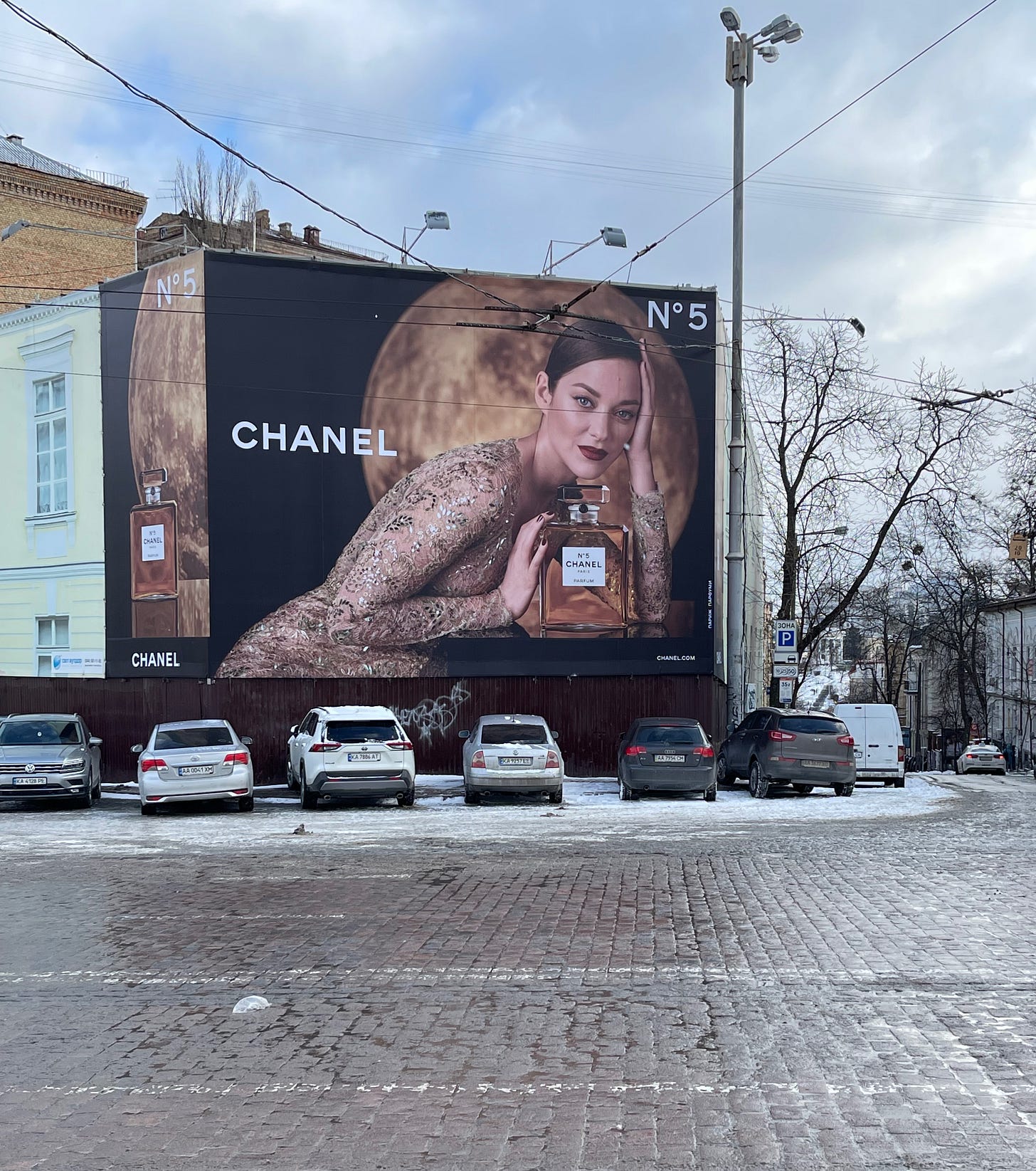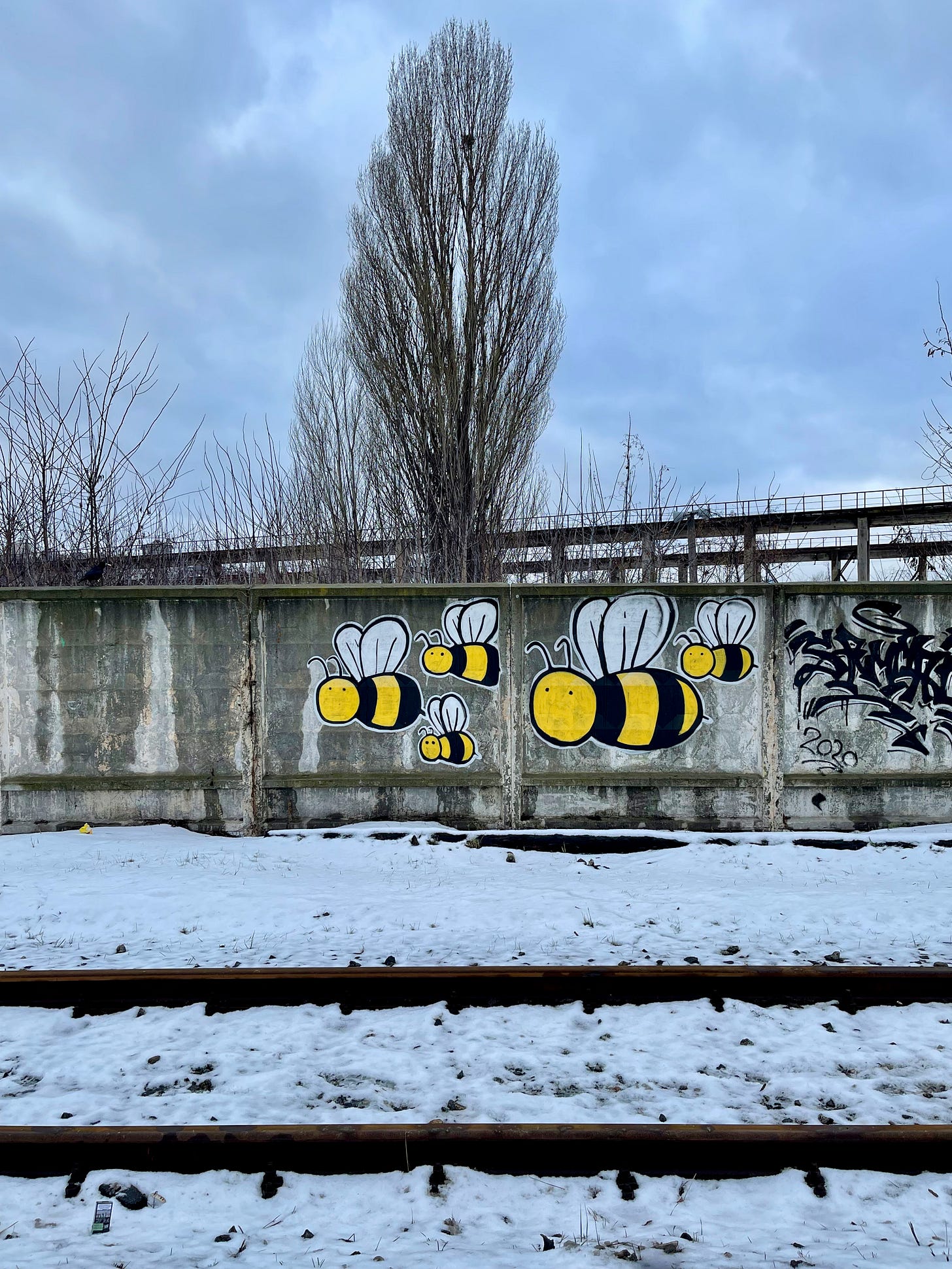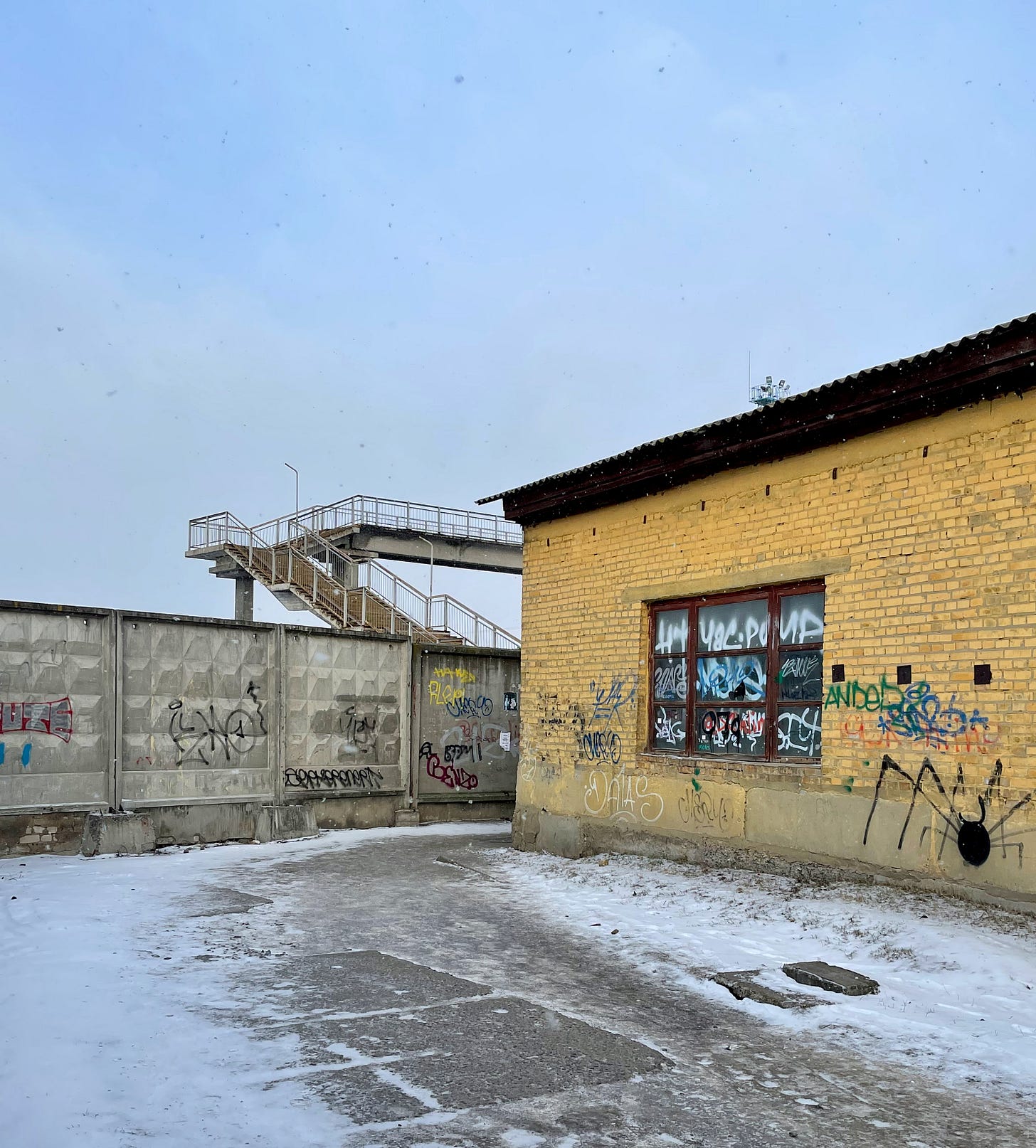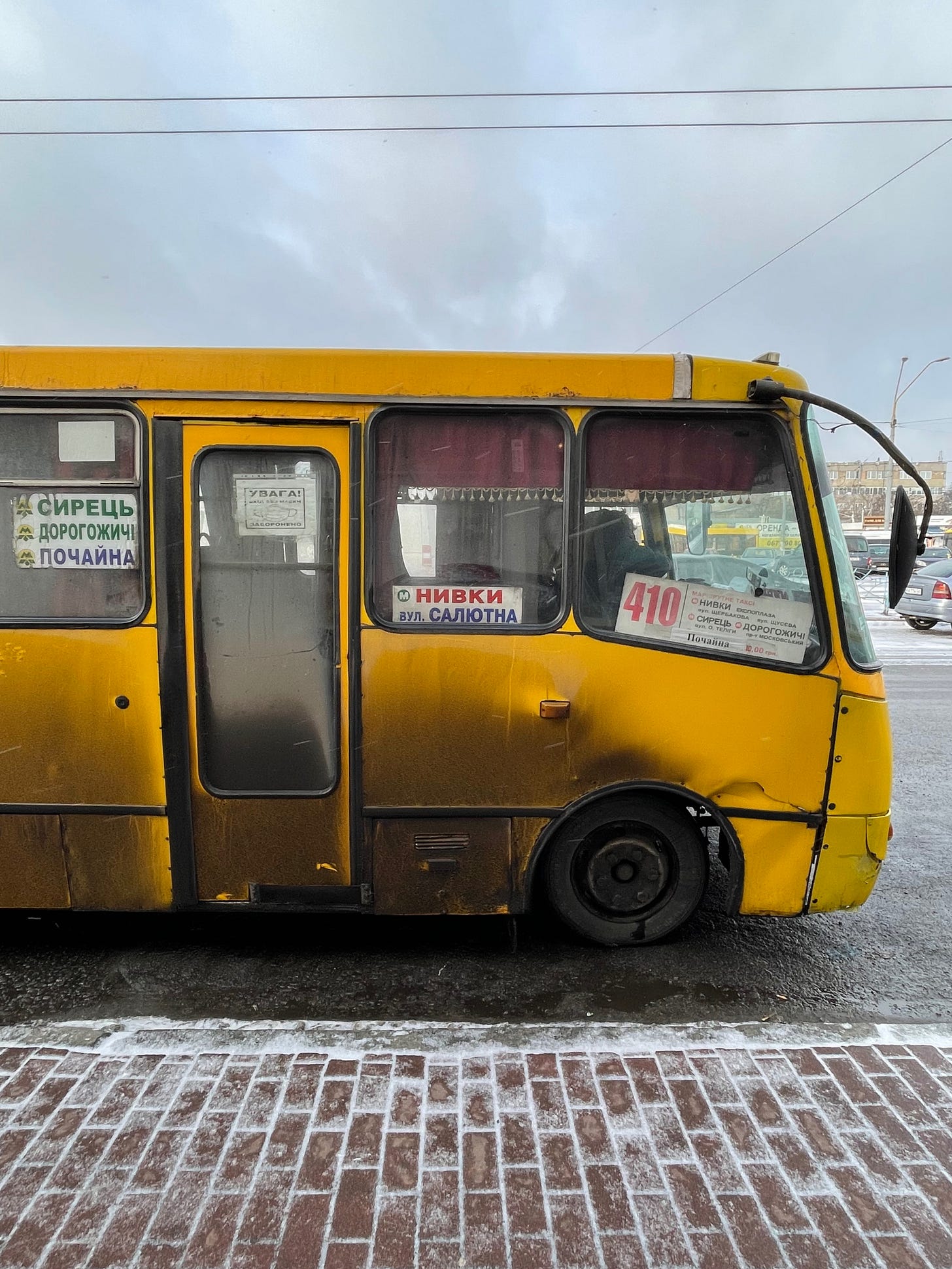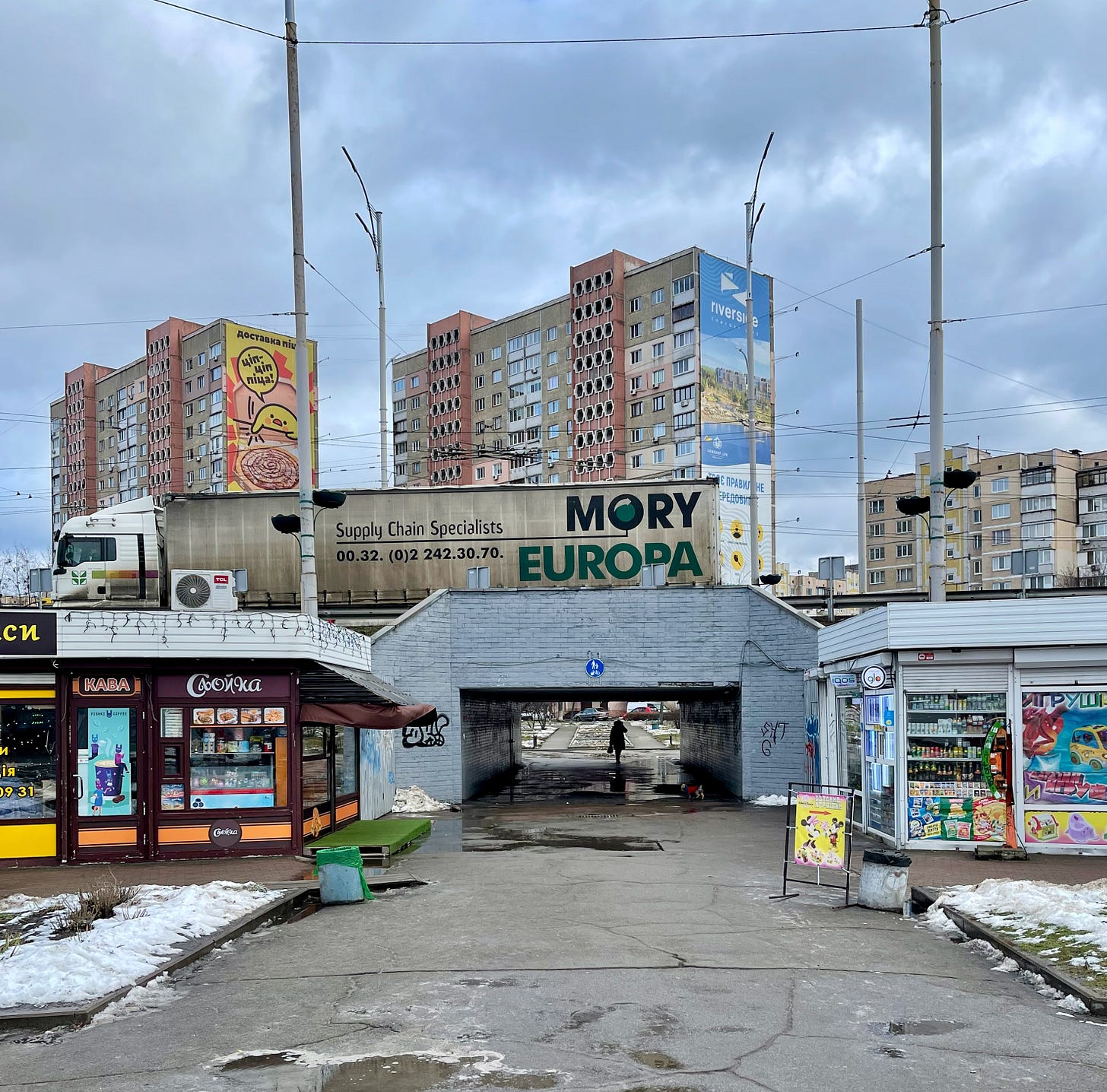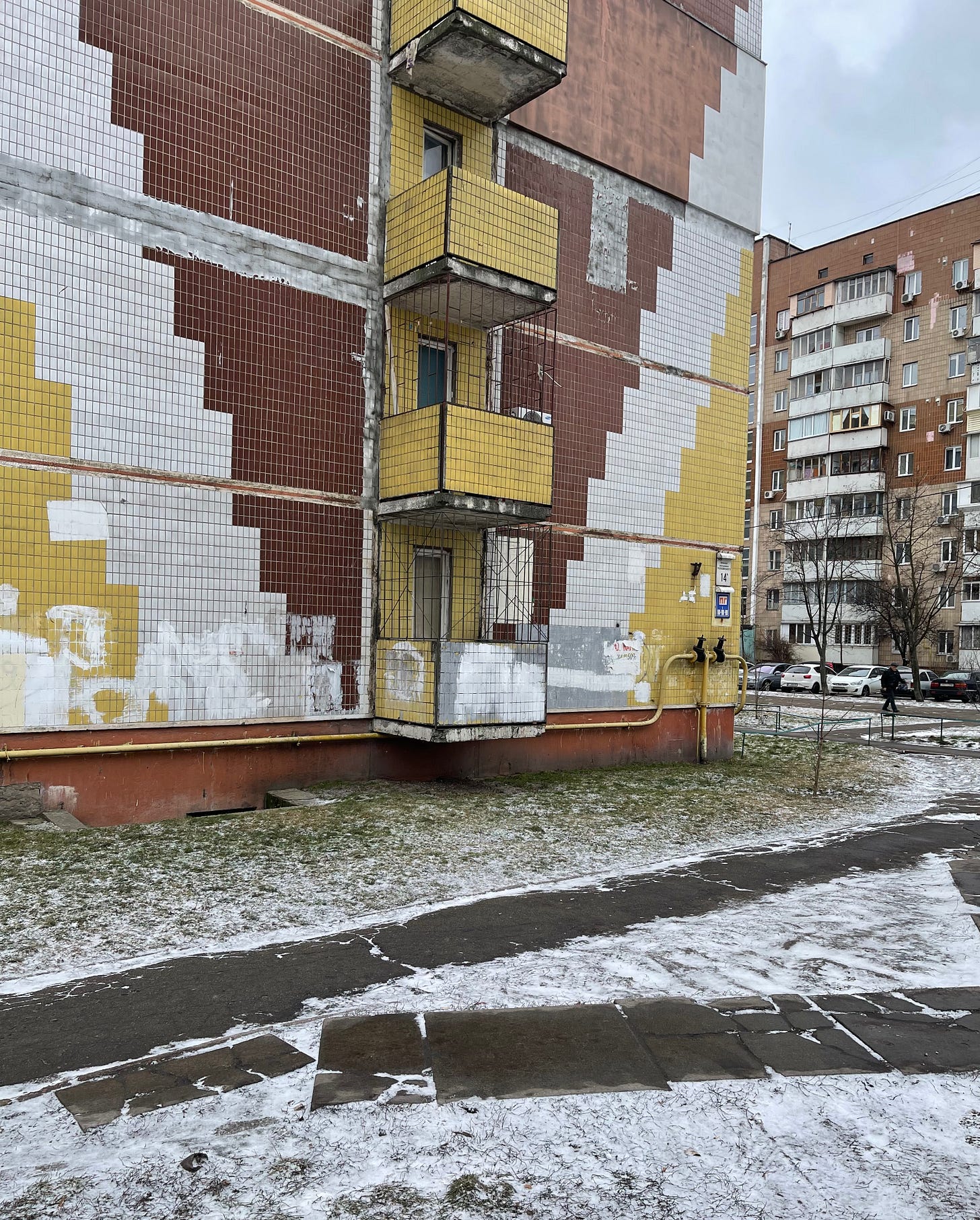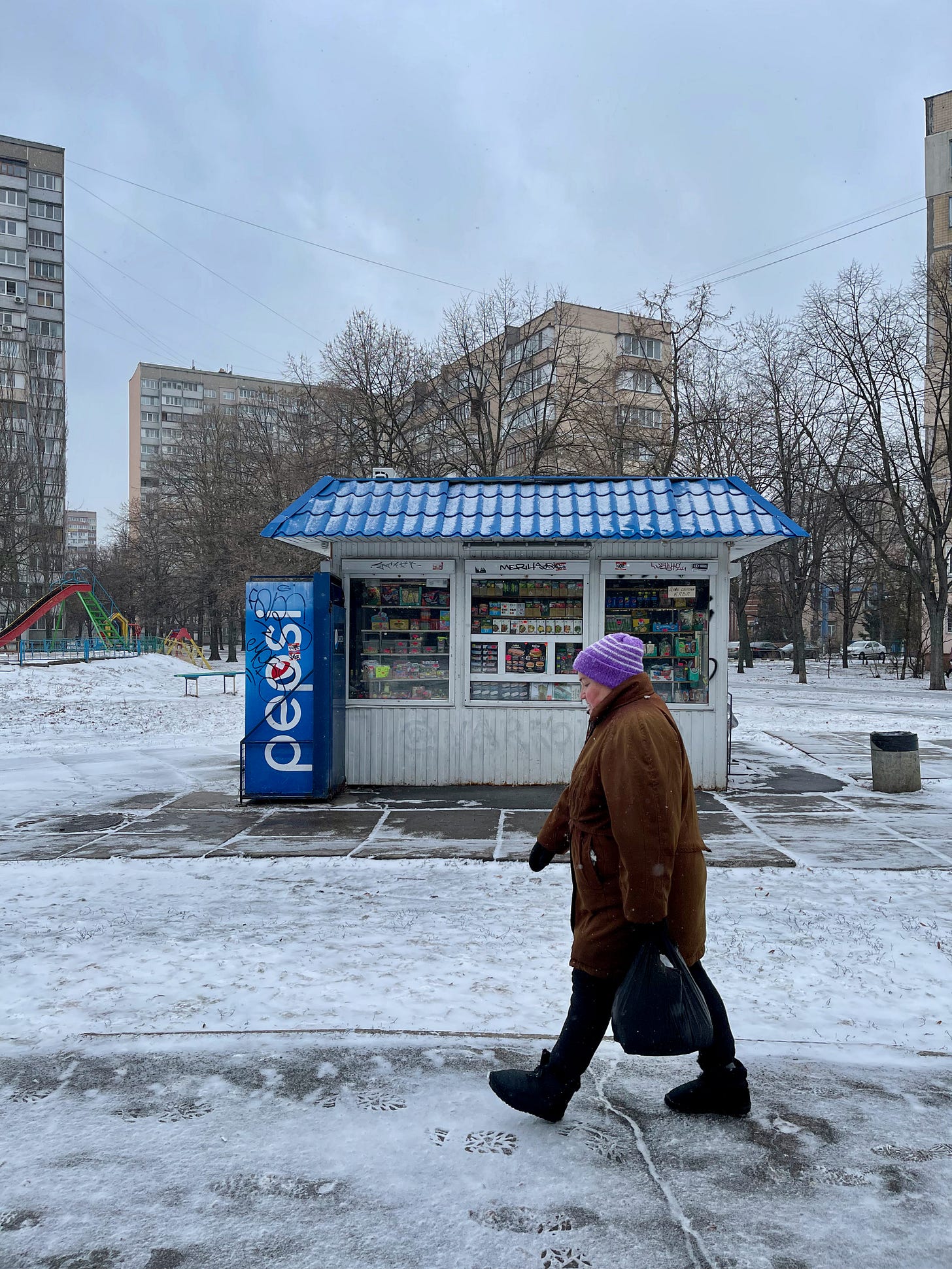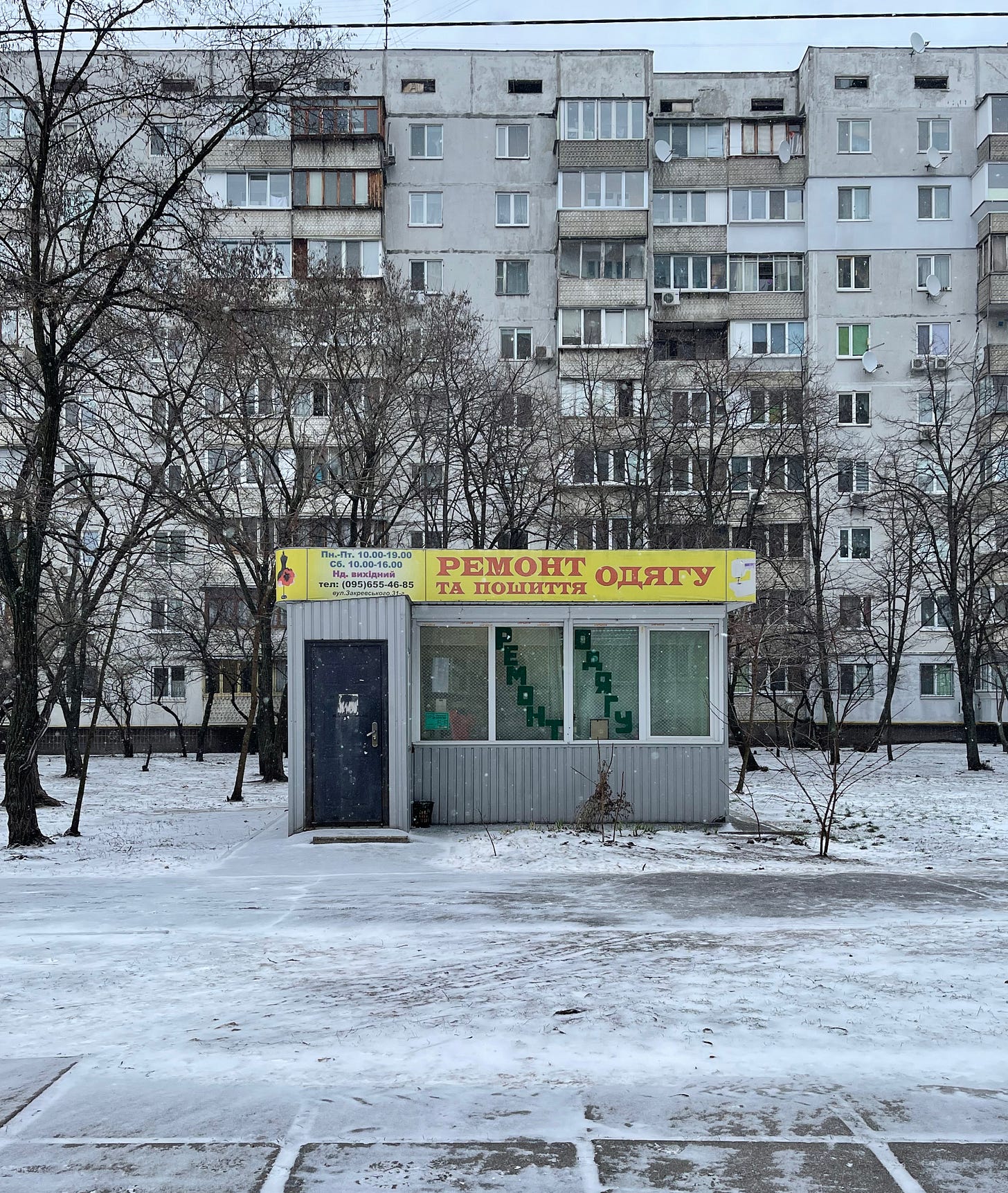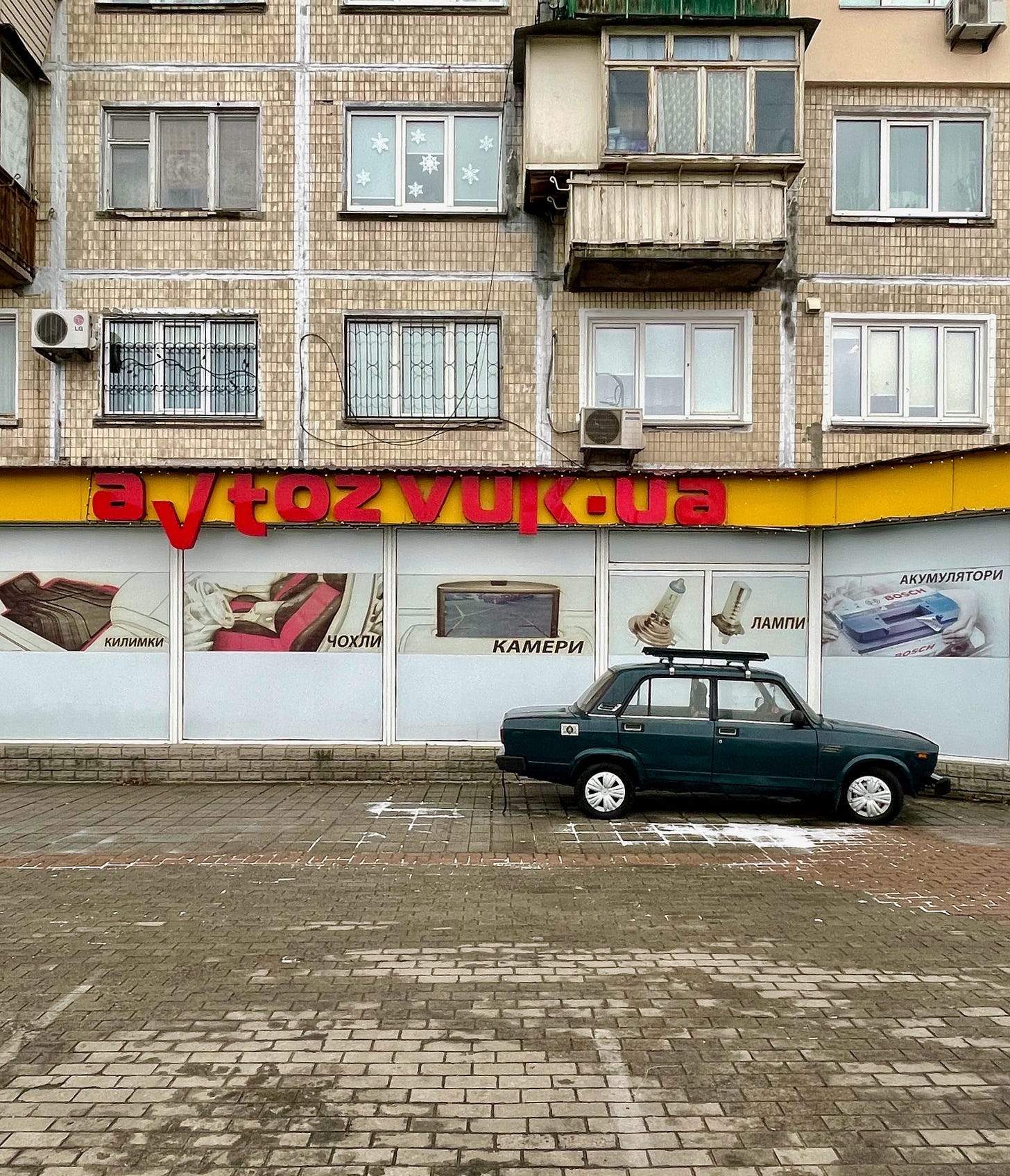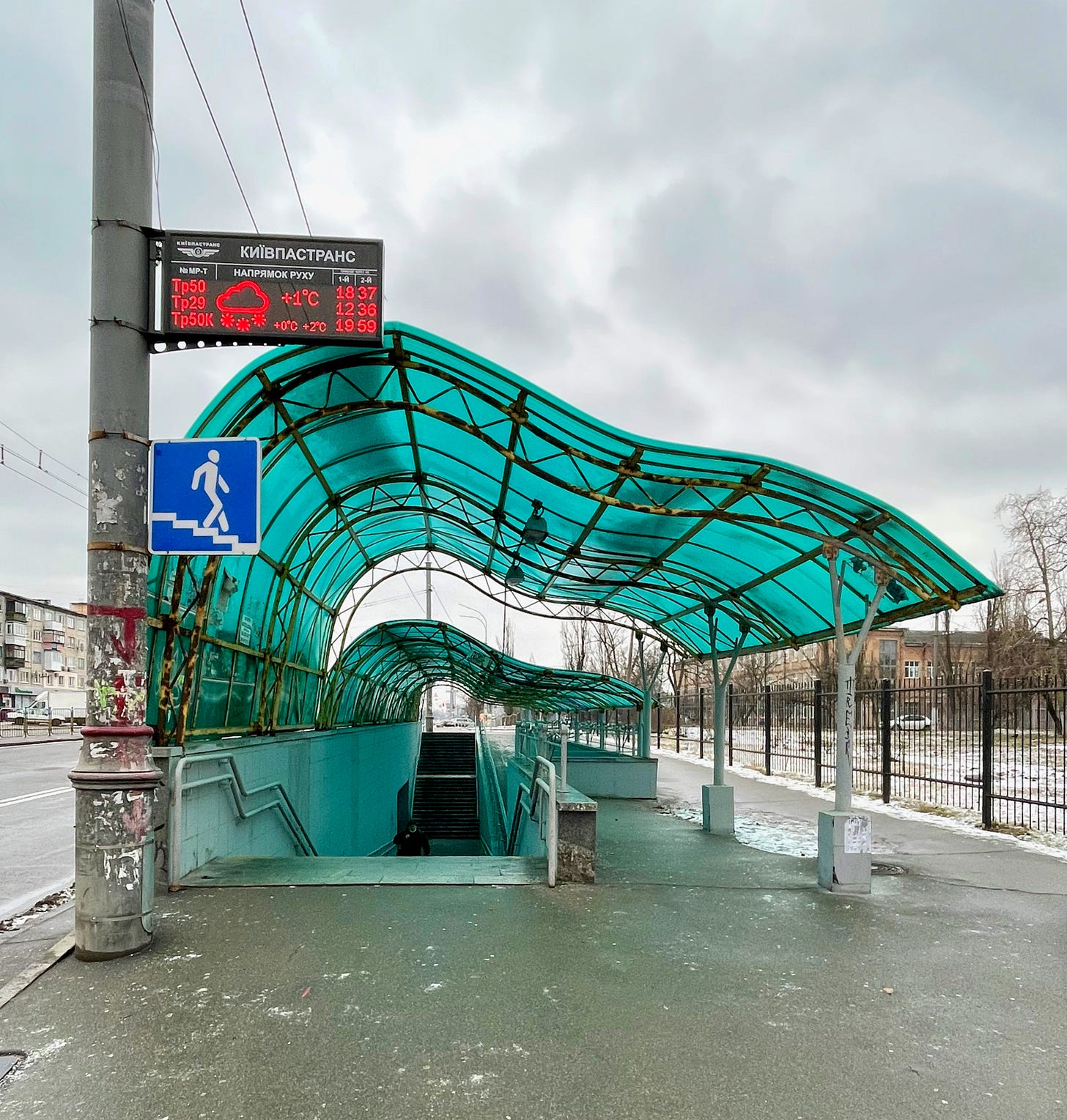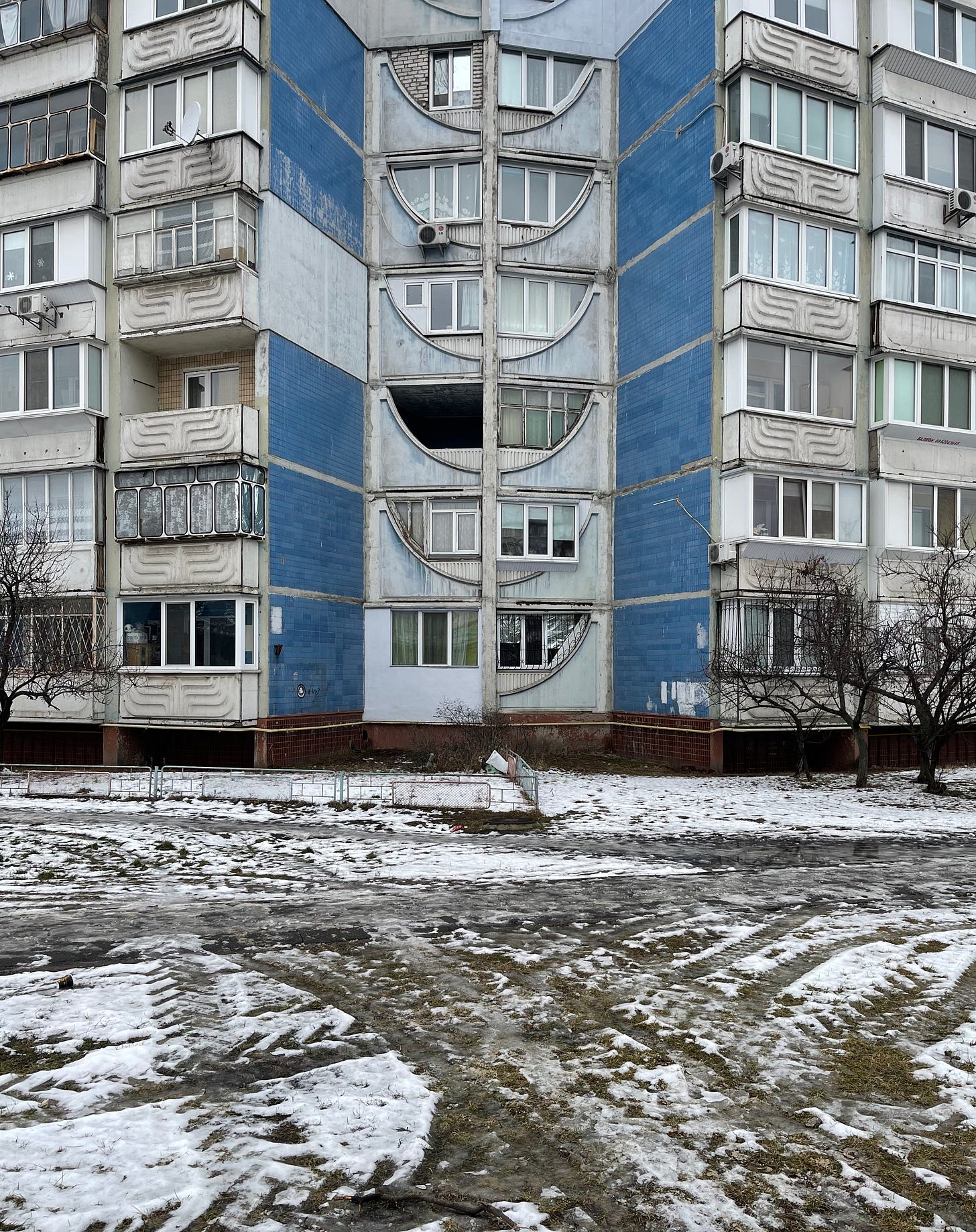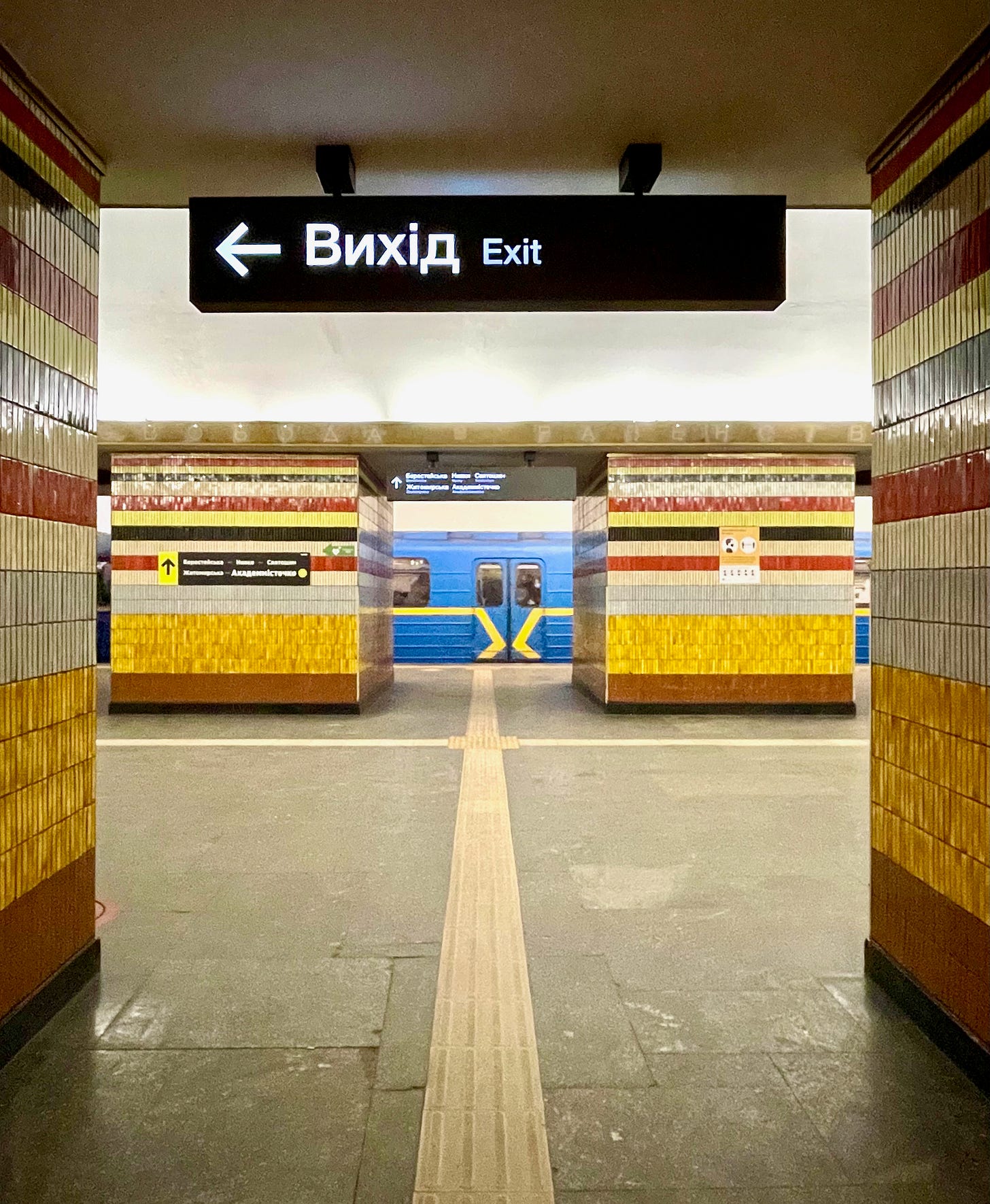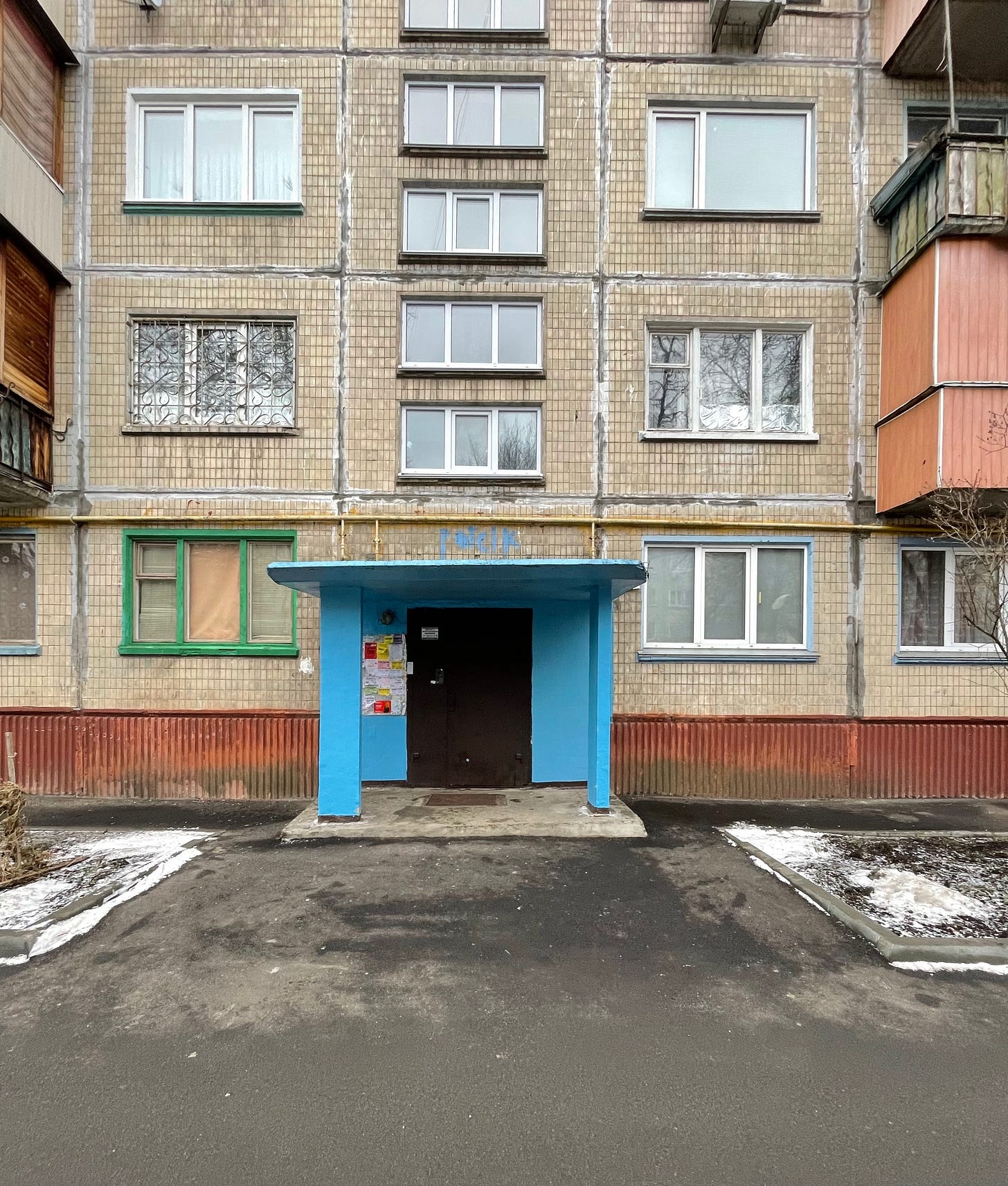Kyiv feels like a city caught in a tug-of-war between two worlds. Between its traditional, poorer, and more complicated past and a newer, wealthier, and simpler future. Between a sense of community grounded in tradition and tragedy versus a western-style promise that everyone will be able to get whatever they want whenever they want it.
When I landed in Kyiv another, more immediate, conflict was reaching a loud zenith, at least on US TV. Russian soldiers were amassed 200 miles away, and the US and its allies were shouting about an imminent invasion that they would not stand for.
In Kyiv there were no signs of anything wrong. No signs of anything but people going about their lives as they usually do, heading to work packed into dirt-covered yellow Marshrutkas, or lined up at coffee kiosks, or clustered in malls watching their kids ice skate.
Instead what I saw were the signs of the much bigger tug-of-war, between traditional communalism and newer American-style consumerism. A conflict being played out over a longer time that is manifest in the city itself, in the difference between the poorer, sprawling Soviet-era housing complexes that dominate the outer edges of the city, where most people live, and the wealthier, historic center, with its western stores.
Kyiv is split into two by the thick, windy Dnieper river. The older, historic, wealthier parts are on the left hilly side of the river. The Soviet-era, poorer, far less hip parts are clustered on the flatter right side, although they can be found at the city’s edge in every direction if you travel far enough.
Like in most cities, I was immediately drawn to these poorer, less pretentious, outer edges, so I ended up focusing on walks that ended in them. They took me from the hip older downtown areas to the very very un-hip Obolon, Solom'yans'kyi, and Troieshchnya neighborhoods (see maps below).
This gave me a visceral look at the two competing ideologies fighting this deeper Ukrainian conflict. Between the planned (and forced) communalism of the past, where I ended my walks, and the market-based (and kinda forced1) materialism of the future, where I started them.
Where I began, the historic downtown, is a collection of neighborhoods clustered around hills on the west side of the river, separated by long walks past monuments, churches, and other grandiose structures.
It is all very beautiful, but like most “tourist must go-tos” it can feel like an amusement park. When I passed the “Historic St. Andrew’s Church” any brief moment of religious transcendence was crushed by a bar blasting Pink Floyd and advertising “early morning happy hour.” This was just after passing a hip artsy graffiti ad for some crypto currency.
Wedged in between the monument-covered hills is a half-finished planned community, made to copy the old historic colorful style, but filled with all the best appliances and western business people. It is Kyiv, branded for rich westerners stuck in Kyiv for business. These type of hoods are in every big city around the world, and they are all equally the same, and they are all equally depressing. Think Battery Park, but with Ukrainian branding.
Getting from this part of town to Obolon and Troieshchnya, my two favorite neighborhoods, means walking north into an old industrial area, through and over a massive rail yard filled with graffiti, to a bus depot in a commercial area filled with malls.
The bus depot is a cliched hive of activity, a blast in the face after the railyard filled with litter, wind chill, and packs of stringy stray dogs.
There are lines of small shops selling everything, including tube socks, and a bar that opens at 8 am. It is also of course filled with tons of idling city buses. The city system is wonderful, inexpensive, and can take you anywhere you want to go. But the bus depot is also filled with Marshrutkas, which are even more wonderful, only a tad more expensive (35 cents vs 30 cents), and can also take you anywhere much faster, and far less safer.
Marshrutkas are a highlight of Kyiv. They are hack buses that copy the routes of the official city lines. Instead of paying 8 hryvnia to get a QR code to try and scan (it never works) on a modern bus with the usual official recorded messages about safety and approaching stops, you toss 10 hryvnia on a rug in a tiny bus packed with crying babies, laughing teenagers, and blasting radios. Or, if you don’t have exactly 10 hryvnia, you toss a bigger bill, and wait (holding tight to whatever you can) until the driver, while talking on the phone, shifting gears, changing lanes, and fiddling with the radio, gives you change.
Each Marshrutka is like a little club house, built by the driver. Sometimes they cover the windows with cloth curtains. Sometimes they are playing music. Every time the vehicles are filthy. Every time they drive faster and quicker than any bus should drive, weaving around obstacles, sending everyone flying, then slamming to a stop when someone yells they want off.
Since Kyiv is split in two by a river, and since I have an irrational fear of bridges, and since the bridges in Kyiv should rationally be feared, I used the Marshrutkas constantly to cheat on my walks, as well as to get back to where I started.
Both Obolon and Troieshchnya, which lay further north (Toieshchnya is also across the river) of the bus depot, are planned Soviet-era communities filled with concrete high rises clustered around parks, playgrounds, shopping centers, and roundabouts.
At every level they show intense planning: From the macro map-level layout of interconnecting complexes built around large thoughtful roads, filled with public transportation; to the next layer of buildings clustered around shared shopping markets, parks, and playgrounds; to the next level of each building having its own plan, its own design, and its own management.
There are roundabouts, which are nodes in the overall macro strucure, that are especially impressive. Sunk in the middle of each, and accessed by large pedestrian tunnels from the four different directions, is a park surrounded by a circular mall.
It is a really clever solution to balancing cars versus people, while also providing another place for shops.
This is the biggest difference between these Soviet-era communities and those in Bucharest. Here there are tons of small shops scattered around. Coffee kiosks. Butchers. Hairdressers. Computer repair. Almost everything you could want is only hundreds of yards away.
Both neighborhoods are absurdly dense, yet they are also relaxing and have a real sense of place. An accomplishment for something that otherwise screams dehumanization.
Like in Bucharest, despite having problems, despite the poverty, it all works.
It has all made me rethink my more libertarian urban planning instincts.
Because while I will always remain skeptical of a bureaucratic class deciding anything, including what is best for the community, at least that class here (and in Bucharest) considered what was best for the community, rather than what is simply best for company profits. Or higher GDP. Or more stuff. Or poll tested this or that.
That is at the core of the real tug-of-war playing out in Kyiv, and most of the globe: Does every country and city give into the ruthless bland consumerism of America? Do they accept the hyper individualism that says happiness can only be found by finding the inner you? That the policy class should focus on making sure all of that happens as efficiently, and cheaply, as possible?
The biggest problem with giving into this American-tinged lifestyle is that it bulldozes away local communities. You know, the thing that binds people together. What with us being social animala and all, that is a problem. It makes people lonely and unhappy.
It also destroys anything else transcendent, not just community. All those things that offer every person, regardless of economic place, the chance at meaning and dignity.
In the American worldview (Democracy! Free markets! Rationalism! Individualism!) so in vogue now that we bomb countries into having it, faith has no market value, is backwards, and gets in the way of individual liberty. Meanwhile, place and family hold you back from pursuing your wildest dreams, keep you from being able to experience it all, and get in the way of building the biggest and best resume.
What transcendent thing exactly is Kyiv in danger of losing? Faith isn’t a huge deal here. The Communists, equally materialistic, saw to that. Family still is pretty big. So is place. Both are at risk of being further eroded. But what strikes me most about Kyiv is the aesthetic.
It might sound crazy to think a city dominated by Soviet-era brutalism is somehow into the aesthetic, but that is completely wrong.
Kyiv is beautiful, in a non-functional way, and that is what matters. Beauty for the sake of beauty. Not to increase land values, or as a marketing gimmick.
At every level, from the opera house filled with normies watching ballet, to the snappy colors, drapes, and carpets of the Marshrutkas, to the odd facades of the housing complexes, to the wild colorful designs of the pedestrian underpasses, to the eye popping graffiti, to the wonderful subtle subway stations, there is a constant attempt to elevate life through art.
It is all very simple, but it is all very beautiful. Kyiv has a culture devoted and intertwined with the aesthetic.
Beauty for the sake of beauty is the transcendent, which American consumerism, given a chance, will wipe away because pointless beauty adds nothing to the market value. Unless of course it can be proven to increase market value by X. Then, assuming the models allow it, there shall be (X - epsilon) beauty.
I spend my last nights in Kyiv doing karaoke in a packed bar, staying up well past when I should, despite US news saying Russia was ready to invade at any moment.
Nobody around me seemed particularly worried, and my only concern was that the airport would be packed with fleeing US state department employees.
That didn’t happen. Instead I had a simple six am bus ride to the airport, where I went from check in to gate in ten minutes, then spent nine hours flying home, only to be reminded of the other conflict I had left behind. Not that one with soldiers, but the ideological one. The one about community versus consumerism.
The striking thing about landing in New York City is being viscerally reminded how deeply it is a city of millions of individuals seeking, but not necessarily finding, happiness by defining themselves as unique. By hundreds of thousands of people flying their freak flag for all to see, almost always while wearing a look of deep insanity, intense unhappiness, or despondent pain.
Being reminded of the bright, obscene, and loud ads bombarding you constantly from every direction, telling you what you should buy, and reminding you that you are a loser if you can’t buy it now.
Being reminded of a dominant practicality that has turned New York into an almost impossible combination of sterile and ugly, erasing anything closed to planned beauty.
Sure there is plenty of individual moments of beauty. The pigeon keepers flying flocks from the rooftops of Queens as you pass by on the subway. The graffiti artist tagging an empty lot with a shock of colors. If you have money, there are wonderful operas, ballets, and concerts to see.
But the American culture isn’t one of the aesthetic, and official government institutions, and the corporate this and that, are all dull, practical, and utilitarian. Port Authority is dirty and filled with desperate people pushed to desperate actions. The new Moynihan Train Hall is a sterile place that is efficient and mean. There is no place to sit, because the homeless might want to do that.
Cities, at their core, are complex social spaces with lots and lots of written and unwritten rules.
Doing your own thing, while ignoring others, despite their pain, despite your pain, seems to be the rule in America
I hope that side loses the deeper conflict currently playing out in Kyiv.
Not the one with soldiers.






